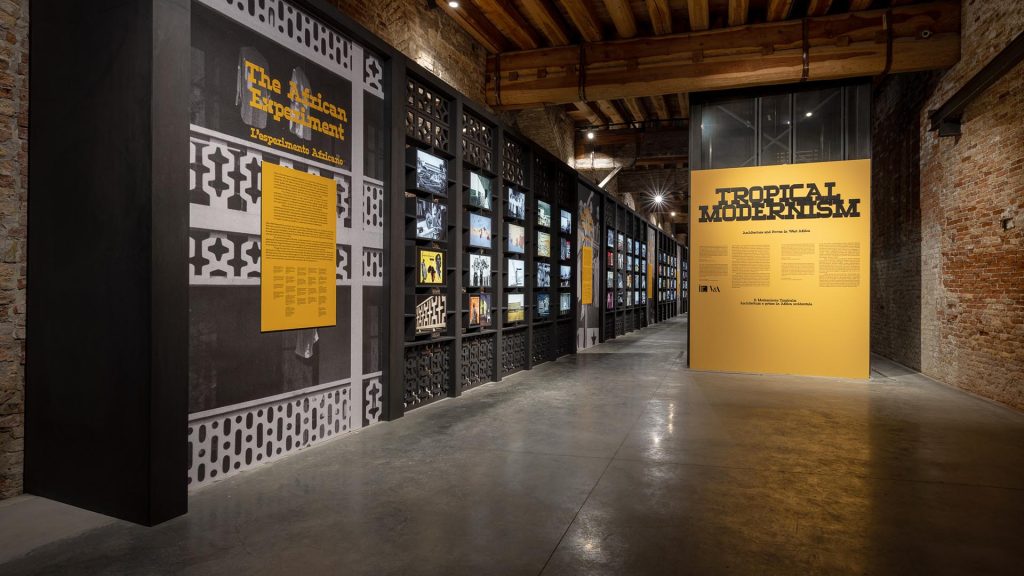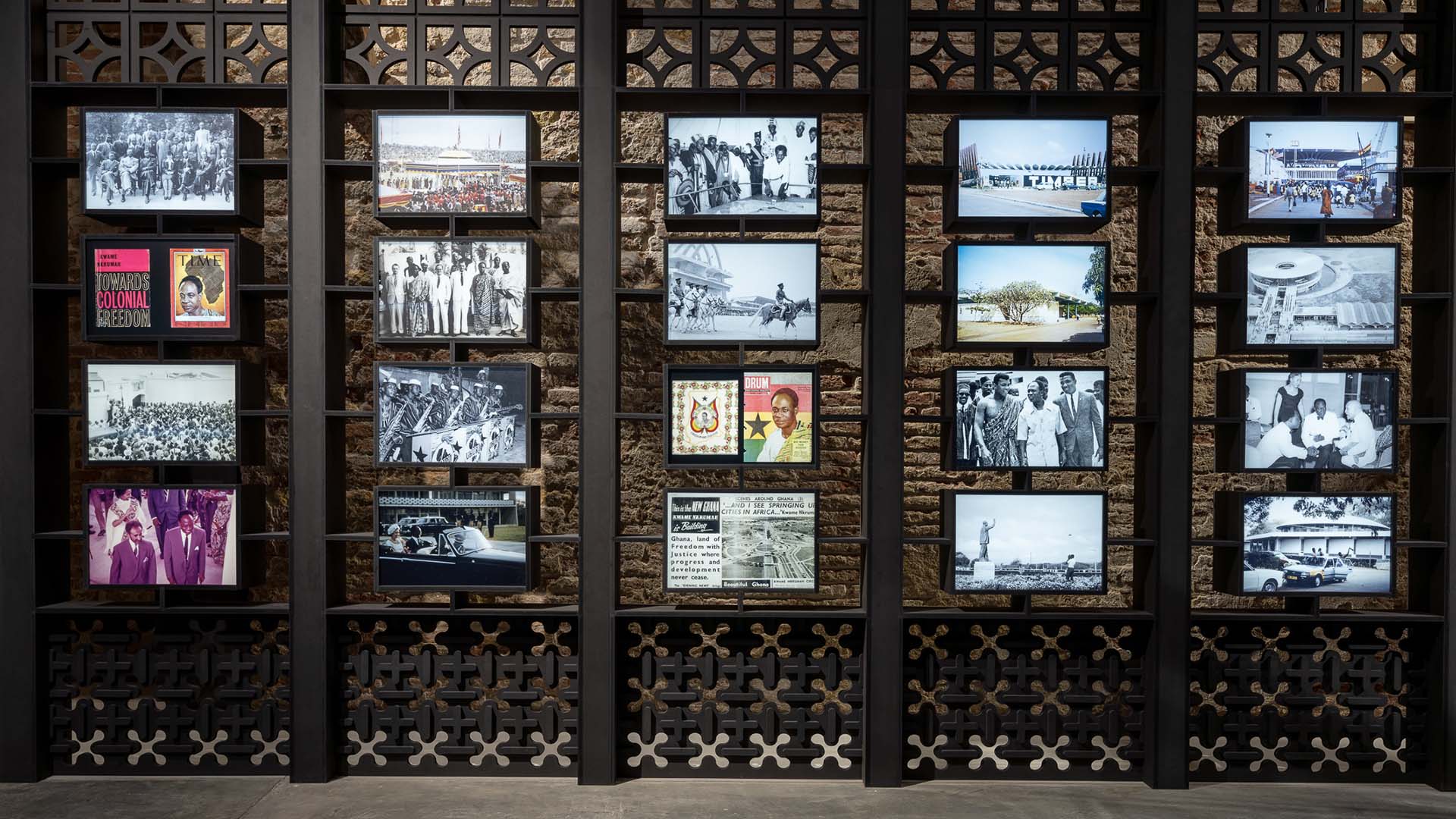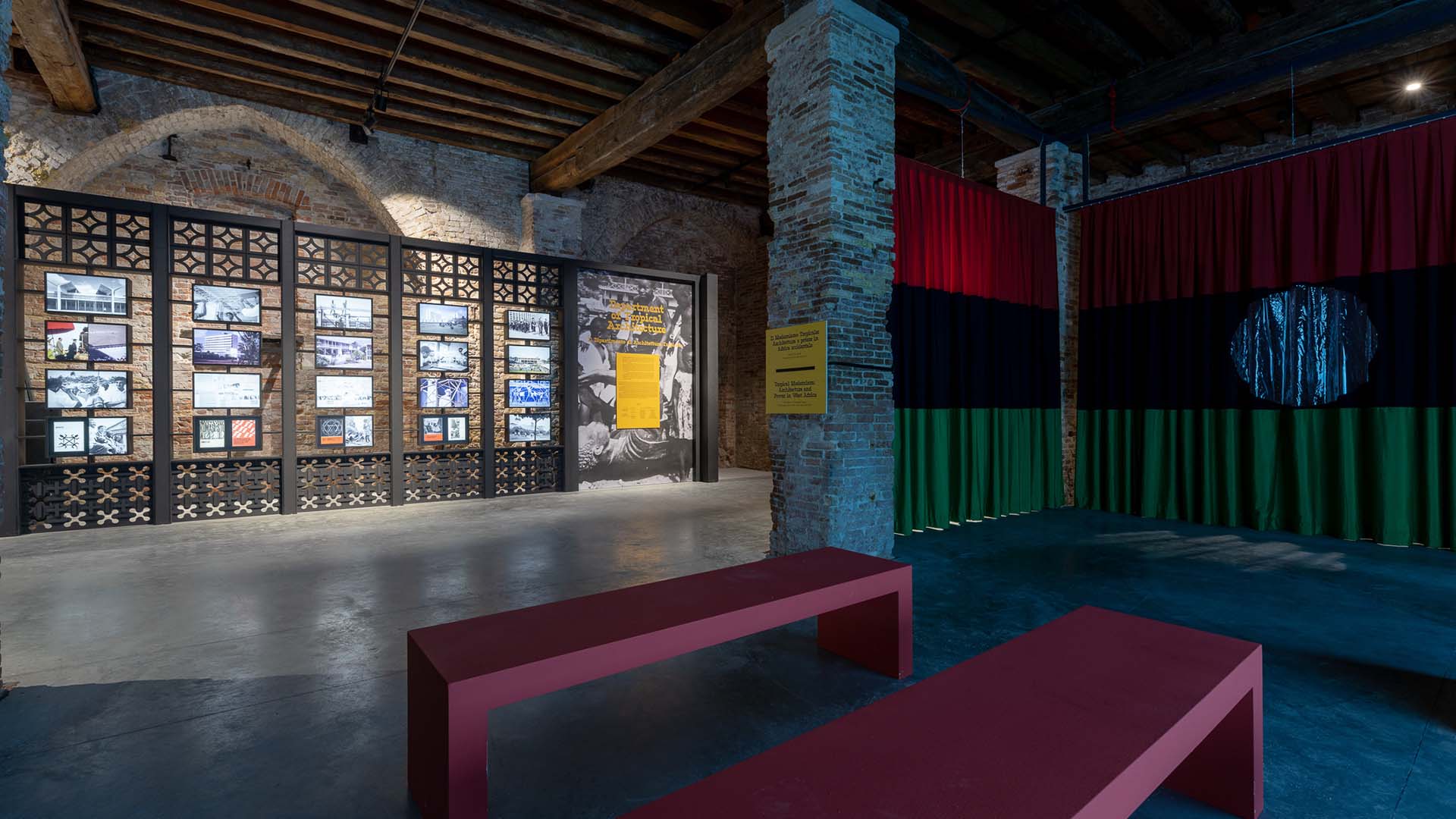
Curator Christopher Turner explains the exhibition Tropical Modernism: Architecture and Power in West Africa at the Pavilion of Appied Arts (Arsenale), which revolves around one of the main themes of Lesley Lokko’s Laboratory of the Future, namely, decolonization.
Your focus is on the influence of Tropical Modernism on Ghana and on other west African Countries. How was the project conceived, and what path does it follow?
The exhibition explores how the inventions and innovations of Tropical Modernism influenced the architecture of West African countries. It focuses on the figures of Maxwell Fry and Jane Drew, two British architects who worked in countries such as the Gambia, Sierra Leone, Nigeria, and Ghana after WWII. Maxwell Fry, in particular, who had the opportunity to work with Walter Gropius in London, later perfected the international style learned from the German architect and urban planner, adapting it to the hot and humid conditions of the tropical climate. Along with Jane Drew, Fry helped spread the new architectural style in Africa using a fund estimated at six billion pounds in today’s value, intended for development projects in British colonial possessions. The large fund allowed Fry and Drew to build schools, universities, and other buildings at an incredible rate, a situation that could never have occurred in their home country and which, in a sense, transformed the colonies into a sort of laboratory of Modernism.
The large fund allowed Fry and Drew to build schools, universities, and other buildings at an incredible rate, a situation that could never have occurred in their home country and which, in a sense, transformed the colonies into a sort of laboratory of Modernism.
We also focused on the political context of the time, a time of great anti-colonial thrusts: boycotts, riots and strikes were multiplying everywhere in West Africa. Kwame Nkrumah, the first president of the newly formed Republic of Ghana, headed a political movement calling on people to stand up to colonial oppression. Many of the buildings Fry and Drew designed in that period were built following some of the bloodiest events taking place in the country. The Community Center in Accra, for example, was built after the headquarters of the United Africa Company burned down during a particularly violent uprising. Interestingly, Tropical Modernism resisted this transition, acting as a symbol of the new, international, progressive African nation that was now competing in the world stage. It seemed important to us to also note some more specific data on the professional paths of the modernist architects who remained to work in that area after 1957, the year in which Ghana became the first independent country in sub-Saharan Africa: how many of them trained locally? How many used concrete for their constructions?

Our research also focuses on the Africanization policy implemented by Kwame Nkrumah, which involved the construction of numerous community buildings, such as schools and churches, as well as large monuments to celebrate independence. Nkrumah established that every project had to involve at least one Ghanaian architect. As European influence decreased, architects began to adapt the principles of Tropical Modernism to incorporate more African styles. They attempted to combine traditional local architecture with modernist designs.
Nkrumah was a strong believer in the pan-African ideal and these buildings were meant to be a beacon of hope for the new free Africa he had envisioned. He wanted Ghana to set an example for the rest of Africa and argued that the achievement of freedom in his country would not make full sense if it were not part of a larger process of emancipation, of active struggle for freedom throughout the Continent. He envisioned, in essence, a “United States” of Africa capable of thriving once colonialism had been defeated.
As European influence decreased, architects began to adapt the principles of Tropical Modernism to incorporate more African styles. They attempted to combine traditional local architecture with modernist designs.
After Nkrumah’s pan-African ideals, what is left today of these projects? What specific legacy has Tropical Modernism left to the new generations of African architects?
We strongly desired the collaboration of Architectural Association (AA), London, and of the Kwame Nkrumah University of Science and Technology (KNUST), Kumasi, Ghana, as they both initiated an exchange program on tropical architecture during the 1950s and 1960s. The program aimed to teach tropical architecture in Ghana and train a new generation of architects who followed the principles of Tropical Modernism. Thus, they appeared to be the perfect partners to track the development of this movement across the vast African continent.
The dissemination of Tropical Modernism by Maxwell Fry, Jane Drew, and a group of other modernist architects, including James Cubitt and Kenneth Scott, was only the first phase of the influence that this architectural style had in West African countries. After this initial phase, the new style was adopted and embraced in the design work, particularly after the introduction of air conditioning systems. Some of the techniques that had played a fundamental role in tropical architecture until then, such as controlling natural drafts or using extended structures to minimize solar exposure, were no longer necessary.
Today, many of the buildings built during that time are in a state of decay and are at risk of being demolished. Nevertheless, the legacy of Tropical Modernism is slowly being rediscovered and appreciated once again. There are significant efforts being made to preserve some of these structures. For instance, the original core of the Accra Fair is being renovated, while the National Museum has recently undergone restoration to return it to its former glory. However, it is more common to see private homes and other more common buildings being demolished or abandoned. In some areas of Accra, it feels like walking through an old archive.
One of the questions that our project aims to answer is, “What lessons can we learn from this period in the history of architecture, particularly in light of the current era of significant climate change?” These buildings were designed in accordance with advancements in building and environmental science. Although we now have much more sophisticated construction tools, by recovering and integrating our modern techniques with the principles of the time, we can build structures that cool passively, which would represent a highly efficient and progressive solution for Africa and other warm regions of the planet. Many architects in Africa are probably asking themselves similar questions today: how to use local and sustainable materials, and how to work with the climate in a responsible and ecological way? The architecture we have analyzed had already provided sophisticated answers to these questions, and I believe that the principles adopted then can be very useful even today.

How is Tropical Modernism displayed to visitors at the Arsenale, and how will the research started in Venice continue in the exhibition scheduled for 2024 at the Victoria and Albert Museum in London?
Our research has been translated into a 25-minute film that is projected inside the Pavilion. The video features interviews with some of the protagonists of Tropical Modernism who are still among us today. For example, it was fascinating to talk to John Owusu-Addo, who is 95 years old and still has an incredible memory. These interviews are precious documents and provide testimonies that have never been transcribed before, making them important sources of information. We also interviewed Samia Nkrumah, a politician and daughter of the first President of Ghana, and asked her about her experiences and memories of the coup that overthrew her father. We spoke with Professor Henry Wellington, who came over to the AA in the 1960s on an exchange programme as part of this partnership between Kumasi and the AA and has memories of London and travelling around the UK. This film essentially documents the research phase of the exhibition’s design and construction process. The installation also includes a 35-metre long brise-soleil wall installation whose design is based on another similar brise-soleil wall designed by Fry and Drew. Together, the film and the mural installation will tell the story of Tropical Modernism and its place within the political landscape of the time. In the exhibition, which will take place in 2024 at the V&A Museum in London, we will also expand our investigation of Tropical Modernism to include South Asia.
Featured image: Applied Arts Pavilion Special Project at Biennale Architettura 2023
Photo Andrea Avezzù – Courtesy: La Biennale di Venezia